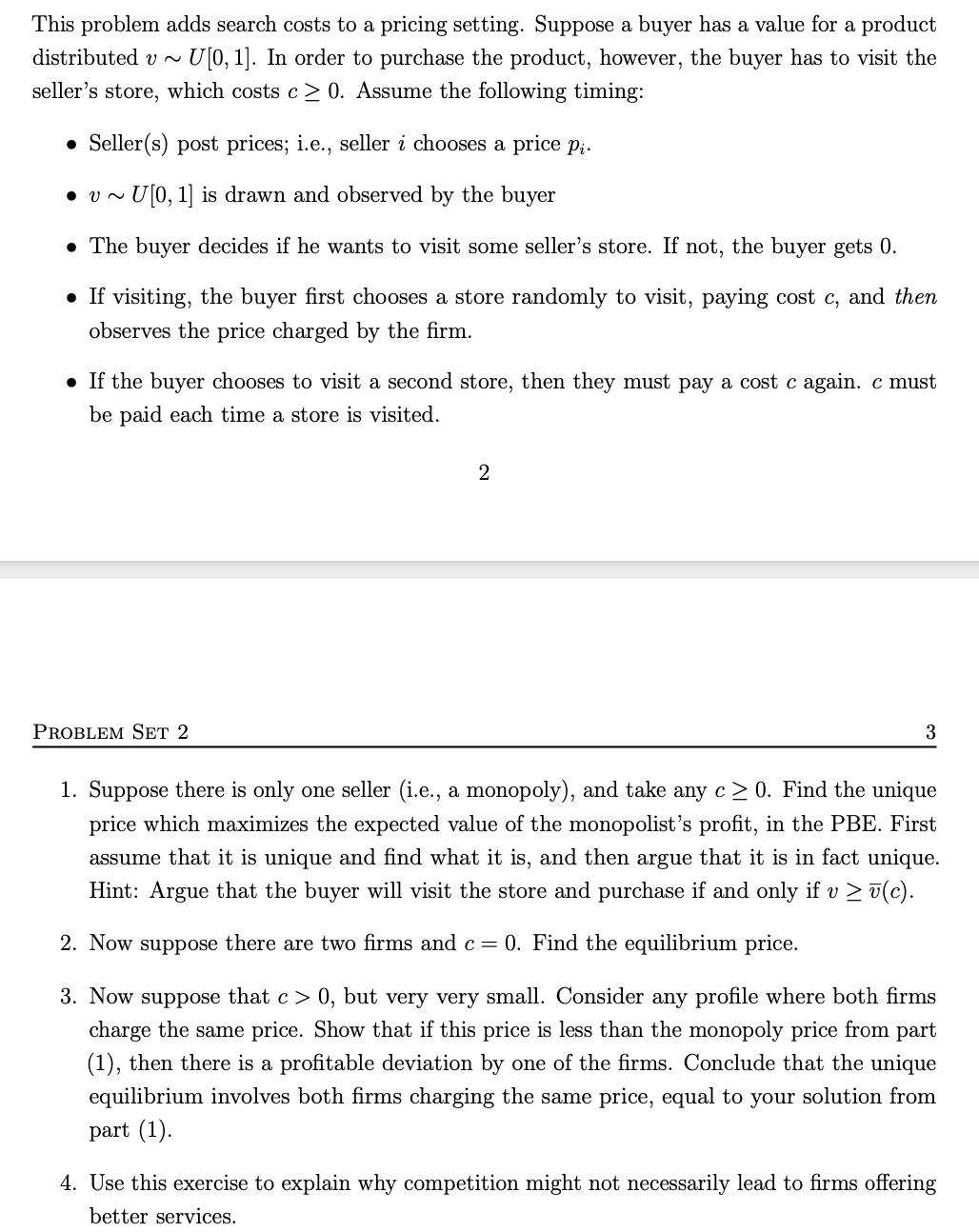Answered step by step
Verified Expert Solution
Question
1 Approved Answer
This problem adds search costs to a pricing setting. Suppose a buyer has a value for a product distributed v ? U [0, 1]. In
This problem adds search costs to a pricing setting. Suppose a buyer has a value for a product distributed v ? U [0, 1]. In order to purchase the product, however, the buyer has to visit the seller's store, which costs c ? 0. Assume the following timing:
- Seller(s) post prices; i.e., seller i chooses a price pi.
- v ? U [0, 1] is drawn and observed by the buyer
- The buyer decides if he wants to visit some seller's store. If not, the buyer gets 0.
- If visiting, the buyer first chooses a store randomly to visit, paying cost c, and then observes the price charged by the firm.
- If the buyer chooses to visit a second store, then they must pay a cost c again. c must be paid each time a store is visited.
- Suppose there is only one seller (i.e., a monopoly), and take any c ? 0. Find the unique price which maximizes the expected value of the monopolist's profit, in the PBE. First assume that it is unique and find what it is, and then argue that it is in fact unique. Hint: Argue that the buyer will visit the store and purchase if and only if v ? v(c).
- Now suppose there are two firms and c = 0. Find the equilibrium price.
- Now suppose that c > 0, but very very small. Consider any profile where both firms charge the same price. Show that if this price is less than the monopoly price from part (1), then there is a profitable deviation by one of the firms. Conclude that the unique equilibrium involves both firms charging the same price, equal to your solution from
- part (1).
- Use this exercise to explain why competition might not necessarily lead to firms offering better services.

Step by Step Solution
There are 3 Steps involved in it
Step: 1

Get Instant Access to Expert-Tailored Solutions
See step-by-step solutions with expert insights and AI powered tools for academic success
Step: 2

Step: 3

Ace Your Homework with AI
Get the answers you need in no time with our AI-driven, step-by-step assistance
Get Started


